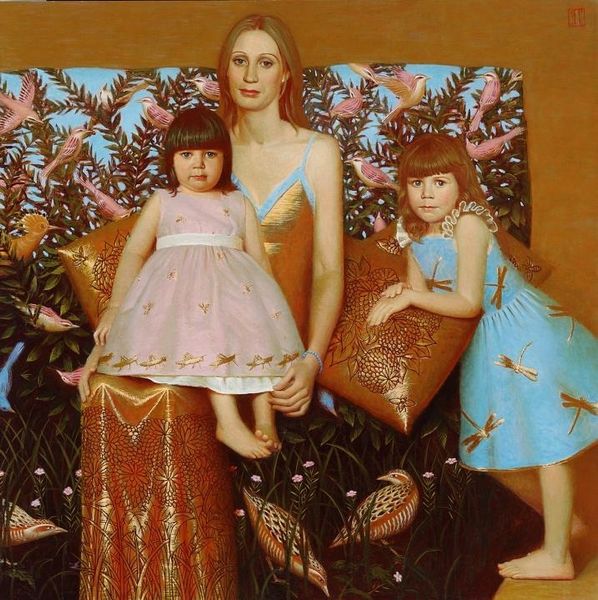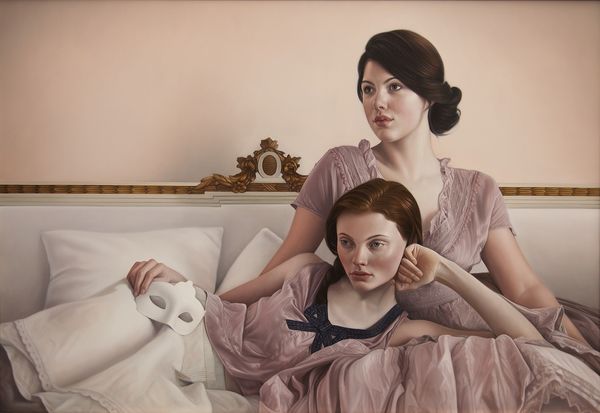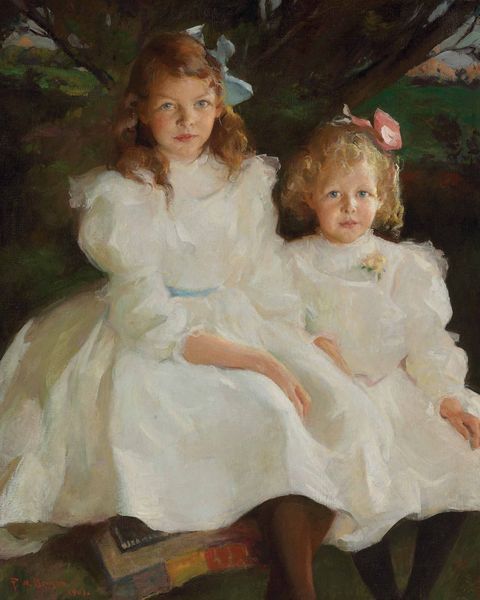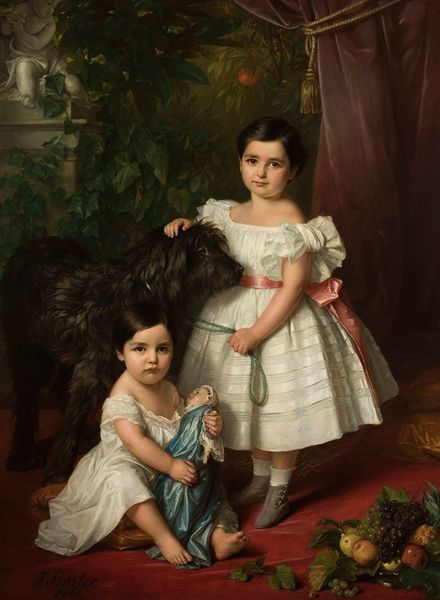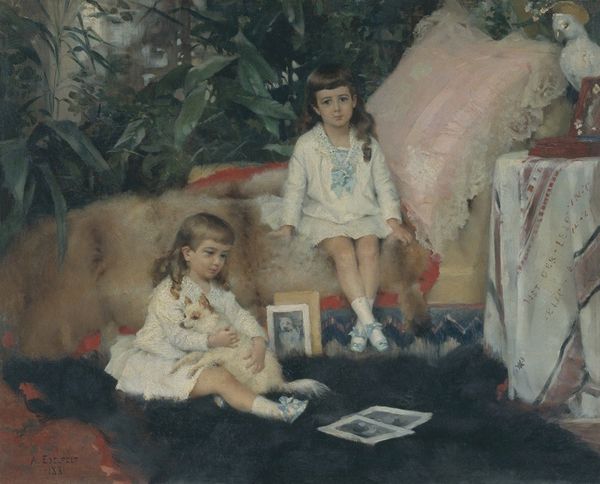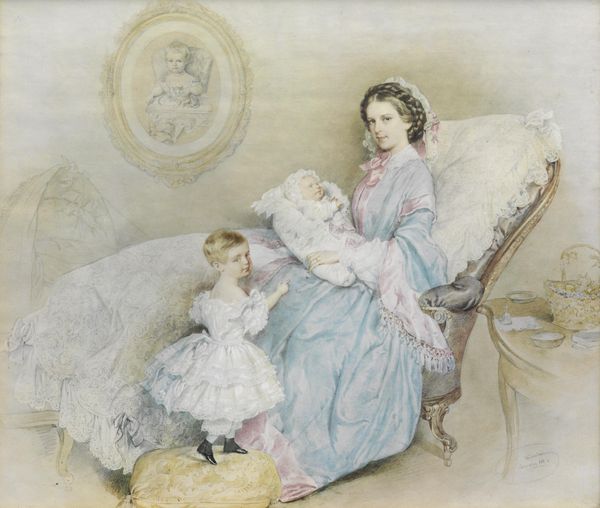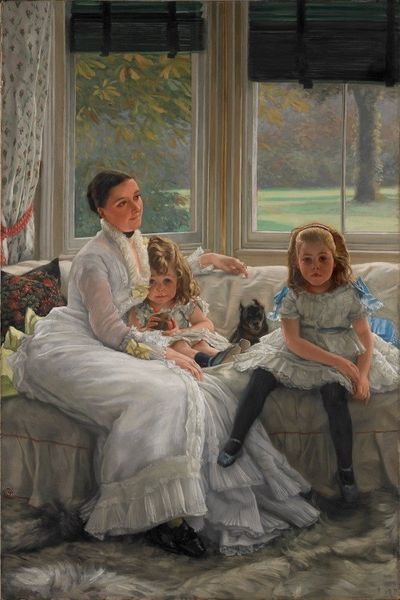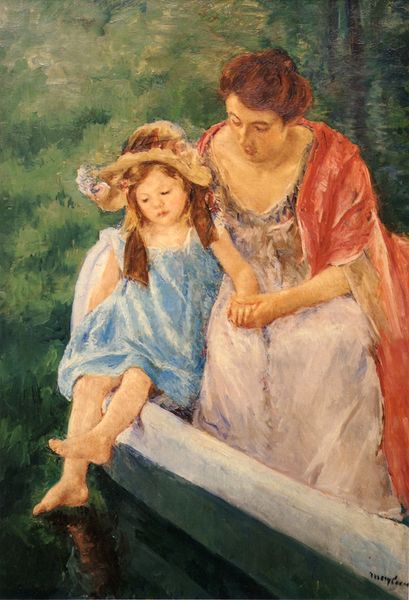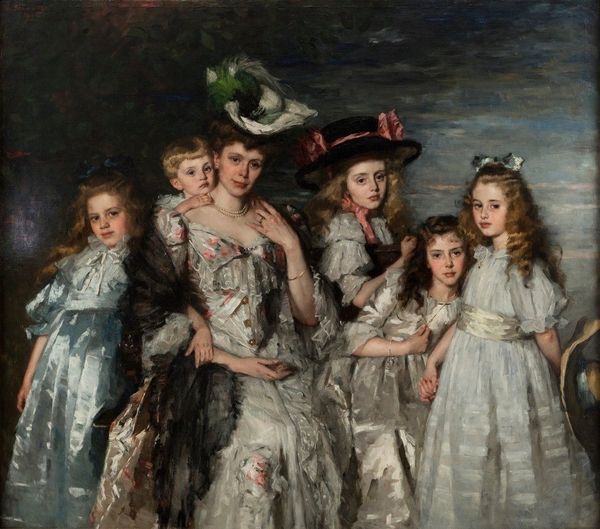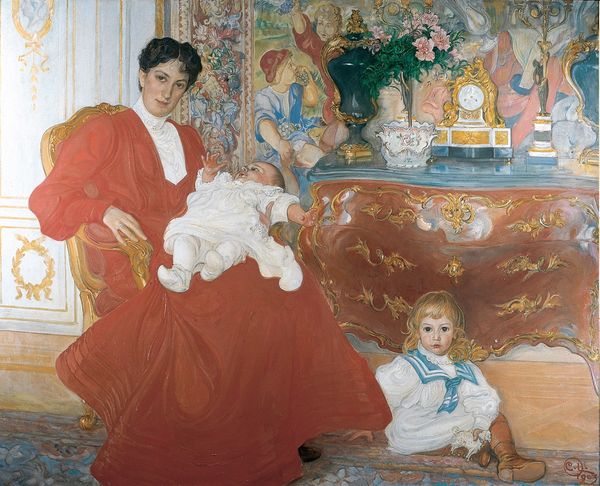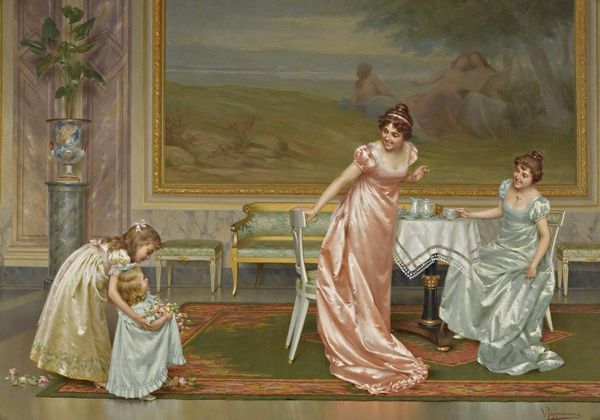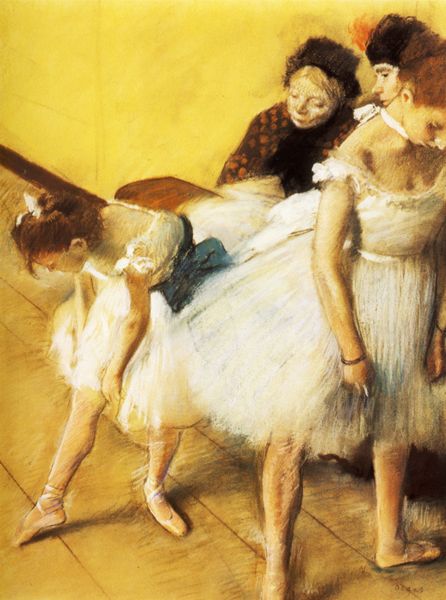
Copyright: Public Domain: Artvee
Editor: Here we have James Tissot’s “Comtesse d’Yanville and Her Four Children,” painted around 1895. What strikes me is the almost ethereal glow to the mother’s dress, contrasting with the very present gaze of the children. It's beautiful, but what's your take? Curator: Beautiful, yes, but also subtly…off. Don’t you feel it? Tissot, ever the social observer, has captured something beyond just a pretty picture. It's the late 19th century, remember – social expectations for women were intensely focused on domesticity, motherhood. Editor: Right, so is this a comment on that? Curator: Perhaps a quiet one. Look at the Comtesse. She's elegant, poised, almost statuesque. But also, distant? Is she truly *present* with her children? Or performing the role of 'mother'? The artist makes great use of composition with each figure almost separated from the others. It’s not overt criticism, mind you, Tissot was a commercial artist, a painter of modern life. But that subtle unease... Editor: That makes sense. So, the ornate chair, the meticulously rendered fabrics…they're not just about showing off wealth? Curator: Oh, they are, of course. But think about what those things represent: confinement, restriction. Think of how her fashion restricts movement; that whalebone corset! And consider her gaze – knowing, resigned perhaps? Does she see her daughters going down a similar path? I do wonder if they all want something beyond the gilt cage! What do you think? Editor: I definitely see that disconnect now. It's like the painting is whispering secrets about the complexities beneath the surface. It really makes you think about the limited options these women had. Curator: Exactly. Art doesn’t have to scream to make a statement, does it?
Comments
No comments
Be the first to comment and join the conversation on the ultimate creative platform.
